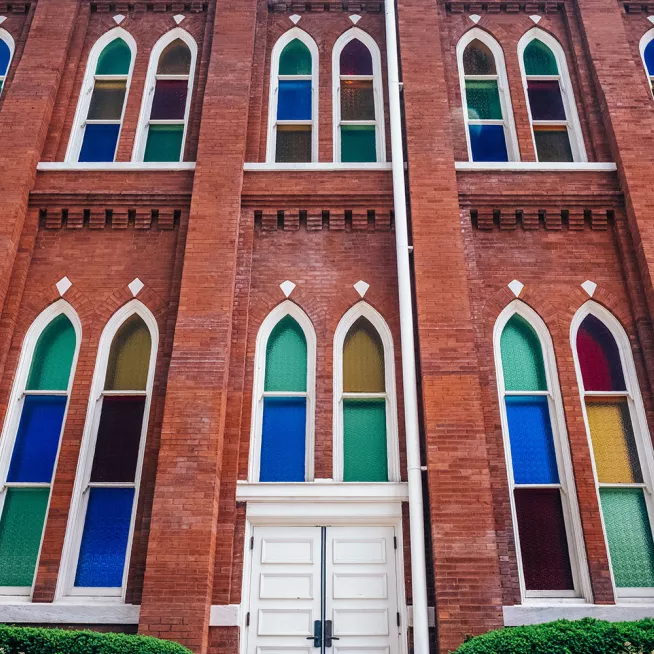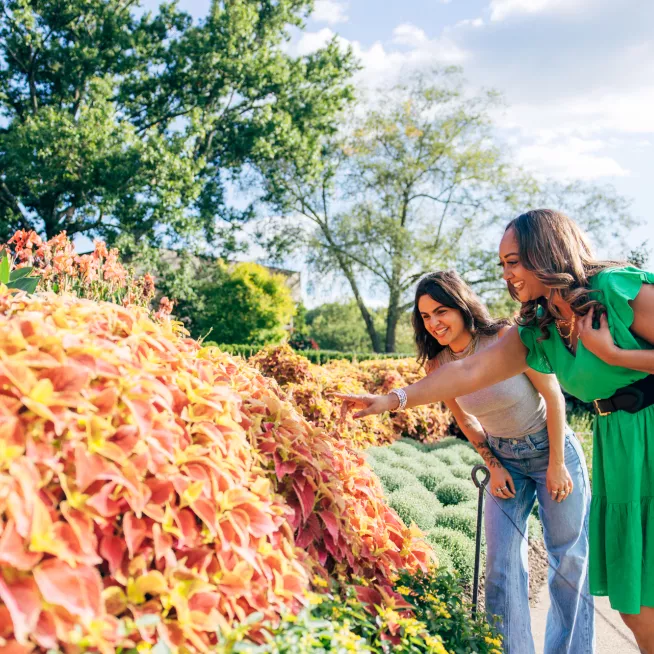Breadcrumb
Frist Art Museum Presents Luminous Paintings by Raqib Shaw Merging Fable, History, and Autobiography
By Raqib Shaw Merging Fable, History, and Autobiography.
Raqib Shaw: Ballads of East and West
September 15–December 31, 2023
NASHVILLE, TN — The Frist Art Museum presents Raqib Shaw: Ballads of East and West, an exhibition of intricate paintings of dream-like, mysterious realms that blend Eastern and Western influences. Organized by the Frist Art Museum and the Isabella Stewart Gardner Museum, the exhibition will be on view in the Gordon Contemporary Artists Project Gallery from September 15 through December 31, 2023.
Raqib Shaw was born in Calcutta (now Kolkata), India, in 1974, but spent most of his childhood in the beautiful Valley of Kashmir—a long-disputed territory that has been marked by sectarian strife that peaked in the 1990s and continues today. Shaw relocated to New Delhi in 1992 and was immersed in his family’s business of selling jewelry, textiles, and carpets. On a trip to London in 1993, he fell in love with the old masters’ paintings at the National Gallery; he eventually moved to the city in 1998 to study art and has lived there ever since. Throughout his career as an artist, Shaw has created mesmerizing images, in which references to Western art history are seamlessly combined with Asian ornamental aesthetics and philosophical traditions.
The exhibition takes its title from the poem “The Ballad of East and West” by Rudyard Kipling, often cited for the line “Oh, East is East, and West is West, and never the twain shall meet.” Yet, as exhibition curator Dr. Zehra Jumabhoy, lecturer in the history of art at the University of Bristol, explains, “Raqib Shaw is inspired by the next lines of Kipling’s “Ballad,” which propose the opposite: when like-minded souls meet ‘there is neither East nor West’ even if ‘they come from the ends of the earth!’ Shaw creates a resounding affirmation that this ‘meeting’ can be fused in art with remarkable results.”
Subverting geographical boundaries, Shaw also blurs the lines between art and ornament—Japanese aesthetics, Mughal artifacts, Islamic textiles and Indo-Persian architecture converge with citations from Renaissance Masters. “Draped in his signature kimono, or Jamawar shawl, the artist often impersonates figures from European masterpieces: think of Shaw as Saint Jerome or the Virgin Mary or of Mr. C (his beloved, recently deceased, dog) as the Christ-Child,” writes Jumabhoy.
Shaw paints with porcupine quills and fine needles to render the precise details of objects from flowers to distant mountains, which are outlined in embossed gold. Jewels, glitter, and semiprecious stones further enhance the sublime opulence of the scenes, beguiling viewers through the iridescent shimmer of their surfaces, even as they are haunted by the sadness that lurks beneath the glamour. Upon closer examination, conflict is present in almost every painting, calling to mind Kashmir’s turbulent history. Jumabhoy notes, “Within each fantastical scenario is a portrait of the artist, his pensive demeanor seeming to concentrate the sorrow of the world, even as he is surrounded by reminders of his lost homeland.” In Agony in the Garden (after Tintoretto) II, Shaw sits atop a rock, overlooking a garden reminiscent of a Kashmiri paradise. Vibrant flowers and greenery fill the front of the scene while the London skyline rises in the distance. Although the scene appears idyllic, scorpions lurk among the rocks and a rabbit-headed figure bleeds onto the grass.
Ode to the Country without a Post Office contains a similar juxtaposition of the tranquil and the horrific. Sitting in a palatial balcony in the foreground is a kimono-clad Shaw, gazing into an opening in the floor, from which hundreds of fireflies are emerging. Beyond this enchanting scene, however, fire and chaos rage in the town behind the balcony.
Shaw views his paintings as visual diaries, a way of recording, processing, and even escaping from what is happening in his own life and in the world around him. “It’s my way of dealing with this world, it’s my way of escaping into another world,” Shaw explained in a video interview at the Frist. “I am a spectator, yet at the same time, I am a player.” Informed by his personal experiences, Shaw’s works can conjure paradoxical feelings: remorse over Kashmir as “a trampled Eden, a Paradise Lost,” as Jumabhoy writes, but also hope for a healed land of converging cultures, ideas, and beliefs.
While his content can be dark and distressing, Shaw often incorporates elements of humor and self-deprecation. The exhibition’s cornerstone work, Retrospective 2002–2022, includes 60 miniaturized versions of Shaw’s own paintings and sculptures in a reworking of Giovanni Paolo Panini’s Picture Gallery with Views of Modern Rome. Shaw stands atop a stack of packing crates marked “Fragile,” wearing a Venetian carnival mask and triumphantly holding a toilet plunger over his head like a wand, as if he has conjured the magnificent array surrounding him through magical means. Placing himself in conversation with the old masters in this manner, Shaw acknowledges the absurdity and gravity of an artist attempting to grapple with the beauty and pain of existence.
Exhibition Tour
Frist Art Museum, Nashville, TN: September 15–December 31, 2023
Isabella Stewart Gardner Museum, Boston, MA: February 15–May 12, 2024
The Museum of Fine Arts, Houston, TX: June 9–September 2, 2024
The Huntington Library, Art Museum and Botanical Gardens, San Marino, CA: November 15, 2024–March 20, 2025
Programs
Thursday, September 14
Artist’s Perspective: Raqib Shaw 6:30 p.m.
Auditorium
Free; first come, first seated
Join Raqib Shaw for this talk celebrating the opening of Ballads of East and West. Shaw will discuss the history and development of his unique painting technique and practice of placing melancholic self-portraits within fantastic landscapes and architecture, in which motifs and compositions from the European Renaissance are combined with elements of the arts of Japan, Persia, and India.
Thursday, November 2
Curator’s Perspective: Still Dreaming of Paradise: Raqib Shaw and the Art of Kashmir
6:30 p.m.
Auditorium
Free; first come, first seated
A pivotal point on the Silk Road, Kashmir was historically a melting pot for an array of cultures, faiths, and creeds. It was vital for the spread of Buddhism to Central and East Asia. Over the years, its lush landscape, circled by the heady Himalayas, inspired many a Sufi saint, Bhakti mystic, and Christian missionary. For the Muslim Mughals, who bedecked the valley with some of its most enchanting gardens and architectural monuments, it was a paradise on earth. It is tempting to look back to the history of Kashmir’s past as a symbol of the inherent hybridity of Indian-ness; the memory of which seems to be fast fading in the subcontinent today. Could we argue that in their multi-cultured and colored references, Raqib Shaw’s gilt-edged images stage a reenactment of Kashmir’s lost syncretism?
Join exhibition curator Dr. Zehra Jumabhoy for this talk that will explore the plural history of the subcontinent that the image of Kashmir summons. It will trace the geopolitics of the region and the way it has figured in memory, myth, and metaphor in contemporary Indian art.
About Dr. Zehra Jumabhoy
Dr. Zehra Jumabhoy is a lecturer in the history of art at the University of Bristol, UK. She is an art historian, curator, and writer specializing in modern and contemporary South Asian art, including its connections with British pasts and presents. Zehra was the Steven and Elena Heinz Scholar at the Courtauld Institute of Art, London, where she completed her doctorate and, subsequently, lectured on undergraduate and postgraduate programs (2016–20). She has been a visiting lecturer at various academic institutions in the UK, India, Pakistan, and Singapore. In 2018, she cocurated the landmark exhibition The Progressive Revolution: A Modern Art for a New India at New York’s Asia Society Museum. Among other ventures, she is the curatorial research fellow at the Glynn Vivian Museum in Swansea, a position funded by the Paul Mellon Centre for Studies in British Art, which will culminate in the major exhibition Imperial Subjects: (Post)Colonial Conversations between India & Wales in autumn 2024.
Exhibition Credit
Raqib Shaw: Ballads of East and West is organized by the Frist Art Museum and the Isabella Stewart Gardner Museum, with guest curator Dr. Zehra Jumabhoy, lecturer in the history of art, University of Bristol, UK.
###







